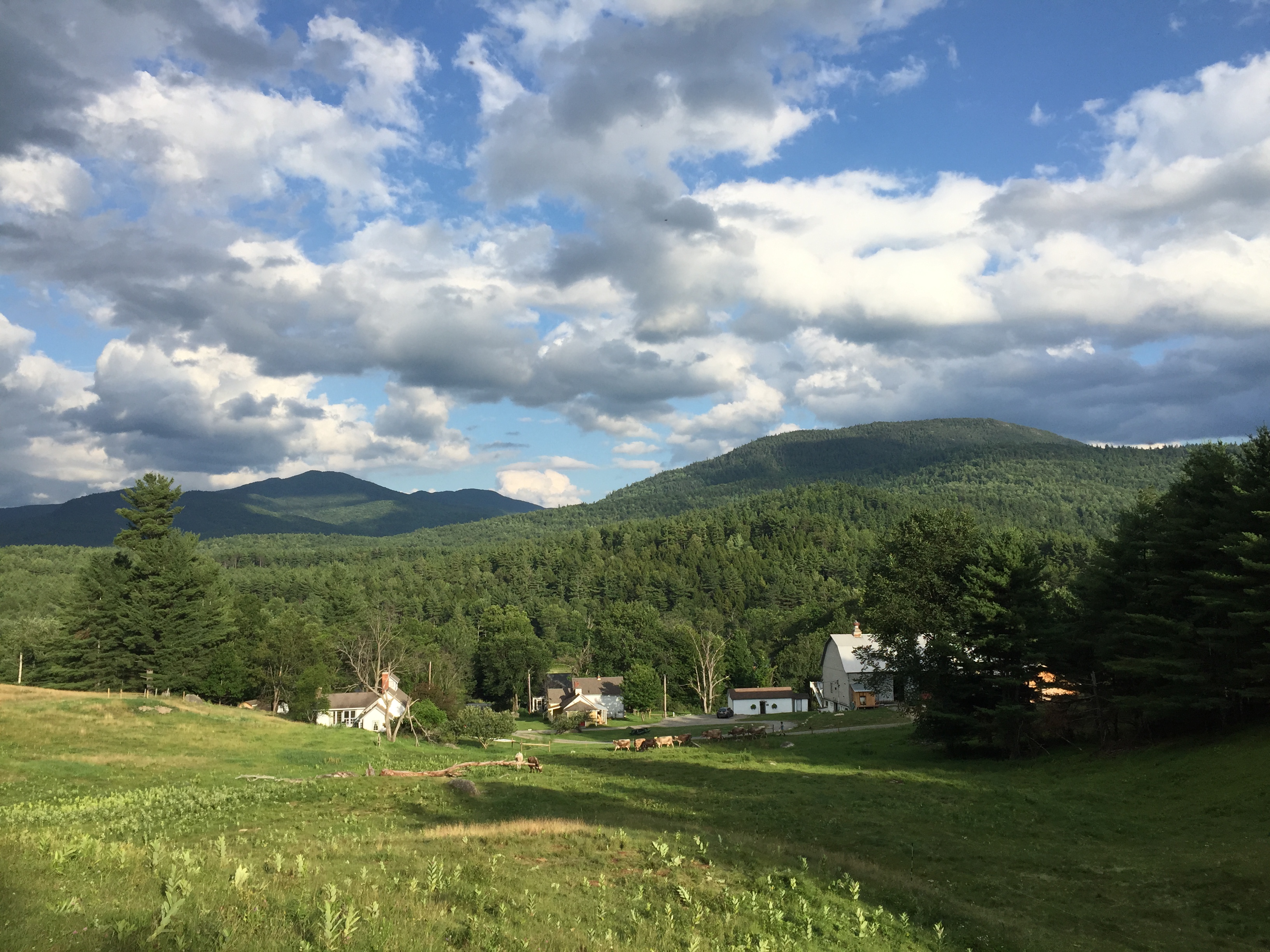
Submitted by guest blogger Casey Galligan
The cheese we make at Sugar House Creamery — a small-scale, farmstead dairy nestled in the foothills of the High Peaks — is a feat that marries physical labor, science, passion, and alchemy. The process begins with the most remarkable ingredient, produced by wisely-husbanded animals that graze upon rich pastures.
For nearly five years now I have come to know Sugar House Creamery — tucked away in the the Adirondacks — so intimately that its routines, rhythms, and seasons course through me. The farmers’ attention to their animals, their scrupulous milking practices, and their appreciation of taste, convinced me that I had found the work I would live for and the life I would work for. I started at Sugar House as unpaid labor, gleefully washing molds. Over time, the farm became integral to my everyday.

At Sugar House our rhythm is harmonious. Twice a day, every day, we extract the complex ingredient that fuels our livelihood from a small herd of Brown Swiss cows. The business is built small by design with intentions to grow only in the quality of our craft and in our quality of life. This kind of growth is immeasurable by economists’ standards but invaluable to us on the farm. My title at Sugar House is Creamery Manager: the woman who makes cheese, ages cheese, cuts, wraps, and sells cheese, all in addition to milking cows throughout the week. My labor here enables me to produce some of what I consume, to feed the community around me, and to be a necessary participant in a natural cycle.

The cheeses of Sugar House Creamery
At Sugar House, we make three cheeses. We make our cheese twice or three times weekly, depending on lactation cycles and seasonal fluctuation. Our creamery is small and precise, holding the simple tools we need to produce our 10,000 pounds of cheese annually.
Our lactic, surfaced ripened cheese, Little Dickens, is hand-ladled and turned daily for the fifteen days of its life cycle in our cave. Our washed-rind cheese, Pound Cake, gets regular washings of a brine solution. Its finished rind is deep orange, the final shade of many layers of mold, yeast, and bacteria developed over fifty-five days of aging. Our pride is our raw milk cheese, Dutch Knuckle. Aged for eight to twelve months on locally milled boards, this is the cheese that tells our story from a microbial level. Dutch Knuckle tastes of broth, savory custard, and wild onions, with a rind that whispers of horseradish. This cheese is our investment, stored in a bank below ground, waiting to be harvested at its most valuable maturity.

How our cheese is made
The cheese making process begins with sunshine and grasses. Cows are enormous ruminant mammals that have the incredible capacity to turn grass into a most primordial food: milk. This extremely perishable ingredient is inoculated with bacteria, molds, and yeasts from the surrounding environment. These microbes will aid in preserving that milk by beginning the fermentation needed to produce cheese while also contributing to the flavor, texture, and essential characteristics of the cheese itself.
A cheese maker’s work can be understood as the simple act of guiding milk into the cheese that it will become through the use of temperature, time, and salt. Her work can also be as complex as determining how to adjust bacteria loads based on diet and lactation of the animal or seasonality; how to exact the correct amount of coagulating enzyme to use based on protein content in the milk; how to manipulate humidity and airflow of aging spaces; how to coax microbes into producing richer populations to enhance flavor and texture; and how to determine when a cheese is ready to be harvested. Cheese makers have spent centuries striving to understand a process that is intuitive and extremely variable, which ultimately achieves an incredible diversity of finished products that we classify as cheese.

Cheese making is a science and an art; farmstead cheese making is food production and regenerative farming. To remain passionate in the craft, a farmstead cheese maker is one who wonders, who asks why, and who records data points. To make great cheese, a farmstead cheese maker is invested in the quality of the milk she uses, and so she is invested in the health of the animals producing that milk and that of the land they graze upon. Cheese making is microbiology and alchemy. Science is still trying to understand how diverse communities of microbes function as a collective to promote or hinder one another’s growth and behaviors. The cheese maker understands that she, like each microbe that contributes to the end product, is just a small part of the finished product.

The passion I have for cheese making and the devotion I feel to Sugar House Creamery is rooted in the philosophy that, as humans, we must seek to find purpose in becoming essential components of the vital processes of life. My dedication to this craft is a succinct way to fuel my own curiosity and intellect, while simultaneously feeding a community and restoring over 23 acres of land in the Adirondacks. I have found my purpose as a farmstead cheese maker.
Visit Sugar House Cremeary's farm store this season! Once you've filled up on goodies, hike the nearby Jay Mountain for some of the best views in the region.
